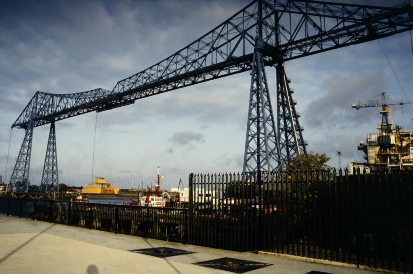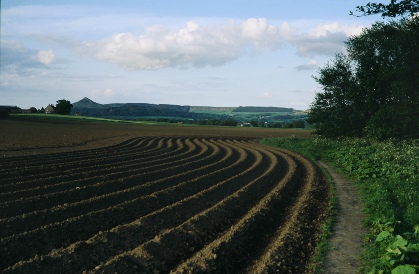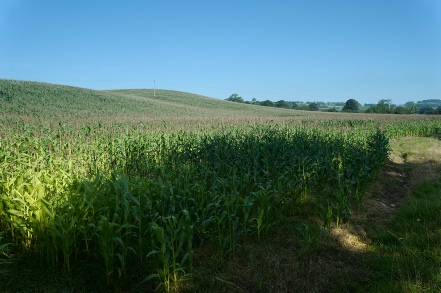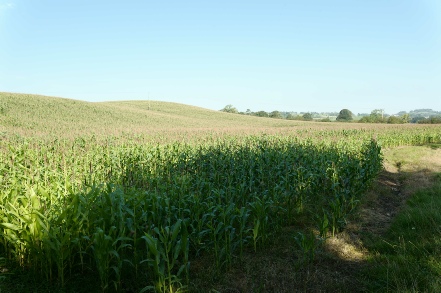





Home
Photo
album
About
Equipment
notes
The foundations that would lead me to take up photography were probably laid down years before I knew what a camera was. That probably sounds a bit odd so that needs explaining, so here goes…
I was born in 1973 in Thornaby, a residential area of Stockton, a town in North East England, UK. To most, a fairly unremarkable area. But to people who know, it has a bunch of aces up its sleeve. Thornaby is quite close to some quite amazing locations. The area is simply chock full of history and heritage. Are you ready for this? Then here we go.
In 1825, the worlds first passenger railway came into existence, running from Stockton to Darlington. Almost 100 years before that, in Marton, a small area which today sits five miles from Middlesbrough, a neighbouring town to Stockton, James Cook was born, who would become one of the most famous seafaring explorers of all time. And so, with this history we already have places and heritage in the area. More? OK then, how about Middlesbrough itself, with its rich industrial history, with reminders still existing to this day, such as the Tees Transporter Bridge. Travelling a bit further, and get to some absolutely breathtaking countryside. We have the Cleveland Hills, large woodland of Cropton and Guisborough forests, and then you have the huge variety of wildlife, flora and fauna that lives within. If this isn’t enough, then we have the dramatic coastline along the North Sea, covering towns and villages such as Saltburn, Whitby and Robin Hoods Bay.

From an age that is as far back as I can remember, on most weekends my parents would take me to some place within this area; whether it be a visit to some interesting museum, or for a walk in the Cleveland Hills. I certainly recall many a happy summer day spent building sand castles on Runswick Bay beach, or sledging in Guisborough woods in the middle of winter.
And so, from an early age, I gained a sense of real appreciation for the outside world; so I suppose it was only natural that I would to do something to celebrate this, by reproducing what I was seeing with some sort of artform. I was not really ‘arty’ as such, as the only thing I could successfully draw were curtains. Photography, however, seemed a fun activity; I am quite mathematical, and considering the technical aspects of photography involve logical numbers, it appealed to my systematic nature. And best still, once the image is composed, the camera does the hard bit for you, in creating an picture!
You can see my preference to landscape and everything in it being the main interest I have for photography in my album of photographs, with the emphasis on landscape and wildlife, in all its’ forms. Photography as a ‘thing to do’ and in terms of subject matter can take a huge variety of forms; but notice that I don’t do studio photography, for example. Yes, the outside world is where it is at.
And today, I enjoy nothing more than getting out, like I did in days that go back further than I can remember; only this time I have a camera; but the sense of anticipation is very much the same, in terms of looking forward to what I might see, whether this is an interesting flower or butterfly. It holds the same level of excitement as it did when my age in years was in single digits. Some things never change, I suppose!
Why the ‘Natural Photographer’?
It may come as a bit of a surprise/disappointment/relief (delete as appropriate) to learn that ‘natural photographer’ has nothing to do with taking photographs whilst wearing no clothes!
When I started looking into creating a website, the first thing was to think of a website name. Unfortunately for me, a website with my name was already taken… by another photographer with my name (simoncoatesphotography.co.uk). What are the odds of that?! So, back to the drawing board, with the next step being some sort of wordplay on my style of photography.
The fact is that, much like artists, when you ‘do’ photography, you develop a style
and technique that reflects in the type of photographs you end up with; much like
a painter or pencil drawer. So, I had to wonder -
I have noticed that with digital photography what a lot of people do is undertake
a photoshoot, download the photos onto a computer, and then choose the best ones
to use later on, for the purpose of putting on social media, to print out, whatever.
The images are then edited. This is easy to do with digital photos; you can increase
the shadow detail, change the colour saturation, delete parts of the image entirely
by cropping out. All great fun, and of course having good editing skills is extremely
important if the photos you are taking are for someone else and getting paid depends
on you getting perfect images. But here’s the thing. I don’t do photography for anyone
else other than myself, which gives me the freedom to do photography in the way I
wish; there is no one to answer to -
Without going too deep, the bottom line is this. The word ‘photograph’ is derived from the greek words ‘photo’ (light) and ‘graph’ (writing or drawing). Therefore a photograph is actually drawing or writing with light. When we take a photograph with a camera, this is precisely what happens; the image is created at that moment as the camera has used light to create an image. If the photograph were to be edited, no matter how little, you are no longer writing with light. You are using an editing device to alter what was originally created. The end result is therefore no longer a photograph, but an image which used a photograph as the base image to start with. I personally feel that this actual meaning about what makes a photograph a photograph has been lost in the modern era of digital manipulation, where editing has become part of the photographic process.
Using filters…
I use filters extensively, which seems at first to be paradoxical in view of me taking
photos without any artificial enhancement. However, my use of filters is simply to
ensure the image is more accurate than it would be if I didn’t use them. I generally
use filters for landscapes, where there is considerable sky showing. This is because
the light intensity is such that the sky is much brighter than the foreground, so
by using filters, I am able to re-

Tees Transporter Bridge; this photo was taken on 4th September 1992, my first ever slide photo!
On a walk in North Yorkshire, with Roseberry Topping in the distance.
Both of the photographs above were taken in September 2024, of a field near Kendal, Cumbria. Note that the crops in the foreground are exposed exactly the same; however the image on the right is much lighter. This is because the foreground has made the whole image overexposed. To correct this, and to ensure the sky looks right, I used a blue graduated filter for the left image. It looks much better and is exactly how it looked in ‘real life’. If I were to edit this image without a filter when I had downloaded the image on the computer, no doubt I could make it look quite close to what it was like at the time, but this would be going by memory and likely would never be exactly right. Using filters is the only way a photograph of a landscape can be achieved with the sky looking correct.
So, going back to the general idea of not editing images, you could say this is a
very purist approach; I actually had this type of ‘style’ long before digital photography
came along. As an example, over the years I have used some quite incredible camera
gear; but the one item I have never used is a flashgun as this adds in artificial
light; I prefer to use what ambient light there is. If there isn’t much light, well,
that is just my hard luck. Anyway, another photographer who also didn’t use flash
was Henri Cartier-
As a footnote -
So, there is it -

